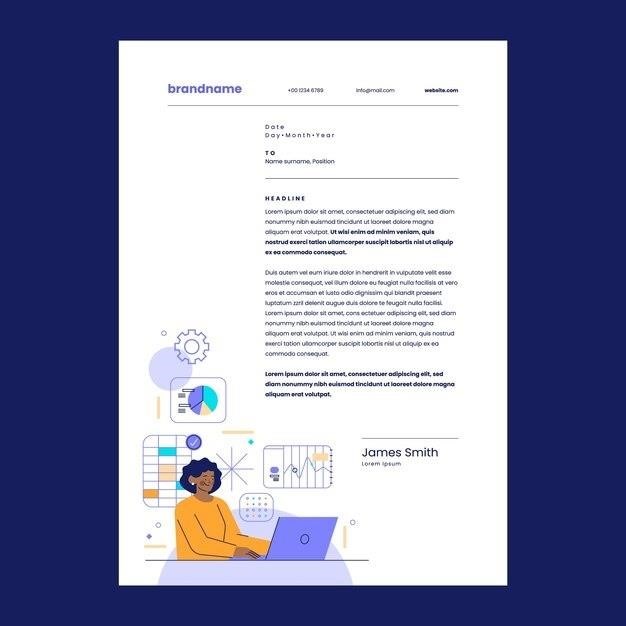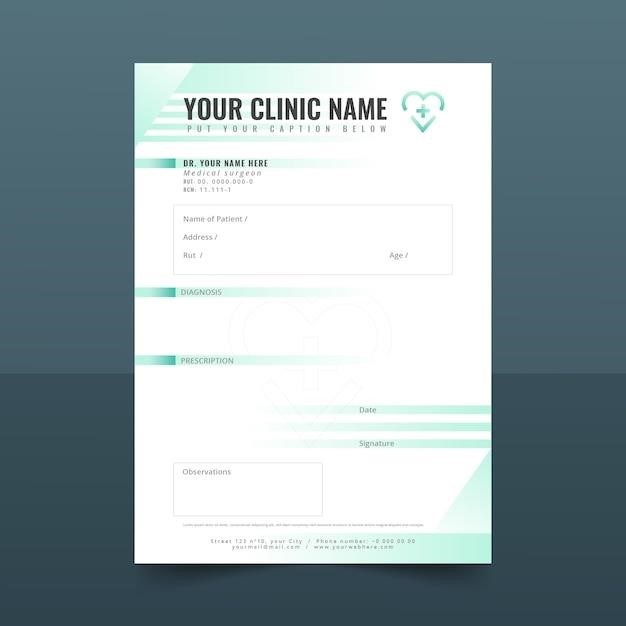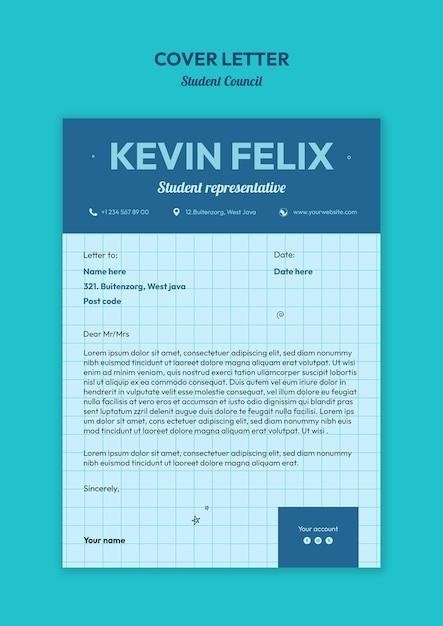Carta de Verificación de Empleo PDF⁚ Guía Completa

Employment Verification Letter PDF⁚ A Complete Guide
This comprehensive guide provides a detailed overview of employment verification letters, including their purpose, common uses, essential information to include, and legal considerations. Learn how to create and verify these crucial documents effectively.
¿Qué es una Carta de Verificación de Empleo?
What is an Employment Verification Letter?
An employment verification letter, also known as a letter of employment or proof of income letter, is a formal document confirming an individual’s employment status and details. It serves as proof of current or past employment, providing essential information such as job title, dates of employment, salary, and sometimes responsibilities. This letter is frequently requested by third parties like lenders, landlords, or new employers to verify an applicant’s claims and assess their financial stability or work history. The letter’s purpose is to provide verifiable information, often including details about compensation and duration of employment; It’s a crucial document for various processes, offering credible evidence of an individual’s professional standing and financial capacity. The format and content may vary depending on the recipient’s needs, but generally includes essential employment data. Employers should ensure accuracy and comply with privacy laws when issuing these letters.
Usos Comunes de la Carta de Verificación de Empleo
Common Uses of an Employment Verification Letter
Employment verification letters serve a multitude of purposes, acting as crucial documentation in various situations. Frequently, they are required by lenders when processing loan applications, providing assurance of stable income and employment history. Landlords often request these letters to verify a potential tenant’s ability to meet rental obligations. New employers utilize them to confirm a candidate’s past employment details and salary information, ensuring accuracy and consistency in provided information. Government agencies may also request these letters for various processes, such as background checks or benefit applications. In essence, the letter acts as a verifiable record of an individual’s professional history and financial standing, supporting various applications and processes where such information is paramount. Its versatility extends to diverse scenarios, showcasing its importance in personal and professional contexts.
Información Clave que Debe Incluir la Carta
Key Information to Include in the Letter
A comprehensive employment verification letter should include specific details to ensure its validity and usefulness. Crucially, the letter must clearly state the employee’s full name and their job title within the company. Precise dates of employment, encompassing both the start and end dates (if applicable), are essential. A detailed description of the employee’s responsibilities and duties within their role provides context and clarity. Accurate salary information, including whether it’s an annual, monthly, or weekly figure, is vital for verification purposes. The letter should also include the company’s official letterhead, complete with contact information and the issuing authority’s signature and title. Including the contact information of the person issuing the verification allows for further inquiries or clarification if needed. Finally, it’s important to maintain a professional and formal tone throughout the letter, reflecting the sensitive nature of the information being disclosed. Accuracy is paramount to avoid any potential discrepancies or issues.
Plantillas y Ejemplos de Cartas de Verificación de Empleo
Templates and Examples of Employment Verification Letters
Numerous templates and examples of employment verification letters are readily available online and in various document formats, including PDF. These resources provide helpful structures and examples for creating your own letter. Utilizing a pre-designed template can streamline the process and ensure all necessary information is included. However, remember to always personalize the template with the specific details of the employee and their employment history. It’s crucial to review and proofread the final document carefully before distribution to ensure accuracy and professionalism. Many websites offer free downloadable templates, while others may provide premium options with more advanced features or customization capabilities. Choosing the right template depends on individual needs and the level of detail required for the verification process. Accessing these resources will significantly aid in generating a compliant and effective employment verification letter.
Generando tu Carta de Verificación de Empleo
Generating Your Employment Verification Letter
This section guides you through creating your own employment verification letter, offering advice on utilizing online templates or crafting a custom letter from scratch. Legal and privacy considerations are also addressed.
Utilizando Plantillas Online
Using Online Templates
Leveraging online templates offers a streamlined approach to generating employment verification letters. Numerous websites provide readily available templates, often in PDF format, which can be customized to reflect specific employment details. These templates typically include essential sections such as employee information, employer contact details, dates of employment, job title, and salary information. The convenience of online templates lies in their immediate availability and pre-formatted structure, minimizing the effort required to create a professional-looking document. Remember to carefully review and fill in all necessary information accurately before downloading or sharing the completed document. Some websites even offer premium templates with more advanced features and designs.
Creando tu Propia Carta
Creating Your Own Letter
Crafting a personalized employment verification letter allows for greater control over content and formatting. Begin by using a professional letterhead featuring your company’s logo and contact information. Clearly state the letter’s purpose—to verify employment—and address it to the appropriate recipient. Include essential details such as the employee’s full name, job title, dates of employment (start and end dates, or current employment status), and salary information (often gross annual or monthly salary). You may also include a brief description of the employee’s responsibilities, depending on the requestor’s needs. Maintain a formal and professional tone throughout the letter. Conclude with your signature, printed name, title, and contact information. Before sending, carefully proofread for any errors in grammar or spelling.
Consideraciones Legales y de Privacidad
Legal and Privacy Considerations
When creating and distributing employment verification letters, it’s crucial to adhere to legal and privacy regulations. Avoid disclosing sensitive personal information beyond what’s strictly necessary. Only release data explicitly requested and relevant to the verification purpose. Remember to comply with federal and state laws regarding employee privacy, such as the Fair Credit Reporting Act (FCRA) in the US. Consult your company’s legal counsel to ensure compliance with all applicable regulations. Obtain explicit consent from the employee before releasing any information, especially if the request is from a third party. Maintain detailed records of all verification requests and the information shared. Carefully review your company’s internal policies regarding data protection and confidentiality to avoid any legal issues or potential breaches of privacy. Remember that unauthorized disclosure can lead to serious consequences.
Verificación de la Carta de Empleo

Verifying the Employment Letter
This section details methods for third parties to verify employment information provided in a letter, focusing on ensuring authenticity and protecting against fraud.
Métodos de Verificación para Terceros
Verification Methods for Third Parties
Third parties, such as lenders or landlords, often require additional verification beyond the employment verification letter itself. Common methods include contacting the employer directly via phone or email to confirm the information stated in the letter. Requesting additional documentation, like pay stubs or W-2 forms, provides further evidence of employment and income. Some organizations may use specialized verification services that cross-reference data from multiple sources to validate the employee’s claims. For independent contractors, verification might involve reviewing contracts or tax returns. The specific method employed will depend on the third party’s requirements and the information available; Remember, it’s crucial to obtain consent from the employee before contacting their employer to protect their privacy. Transparency and clear communication throughout the process are vital.
Documentación de Apoyo Necesaria
Necessary Supporting Documentation
To bolster the credibility of an employment verification letter, supporting documentation is often beneficial. Pay stubs, offering a clear record of earnings and pay frequency, serve as strong supporting evidence. W-2 forms, issued annually by employers, confirm yearly income and tax withholdings. A copy of the employee’s contract, especially for independent contractors or specialized roles, provides details on the terms of their employment. Bank statements, showing regular deposits aligning with the stated salary, can add further verification. While not always required, these documents can significantly enhance the verification process, especially for high-value transactions or situations where more robust proof is needed. The specific documents required will depend on the requesting party’s needs and the nature of the verification request. Always ensure you have the employee’s consent before submitting any personal financial information.
